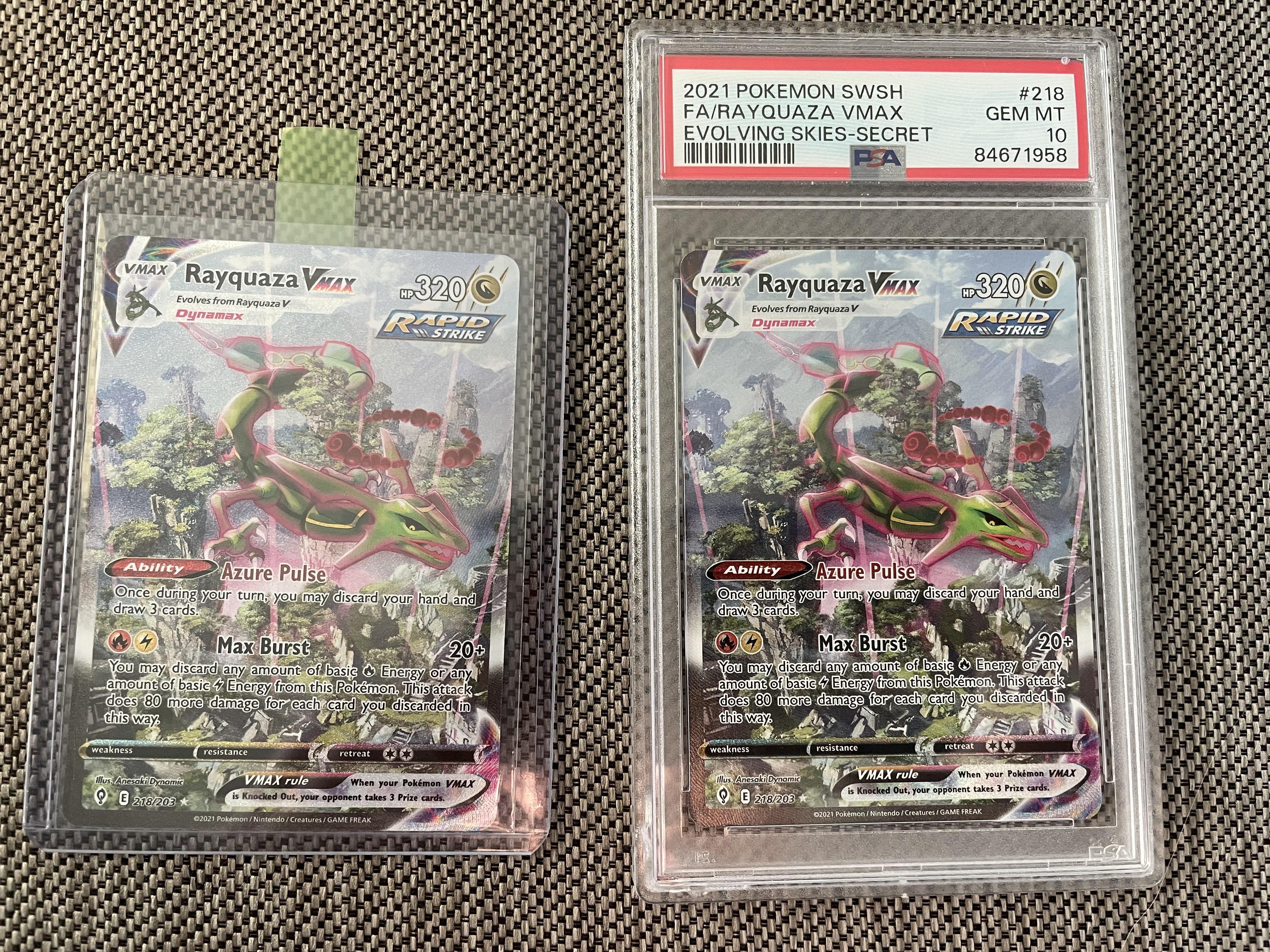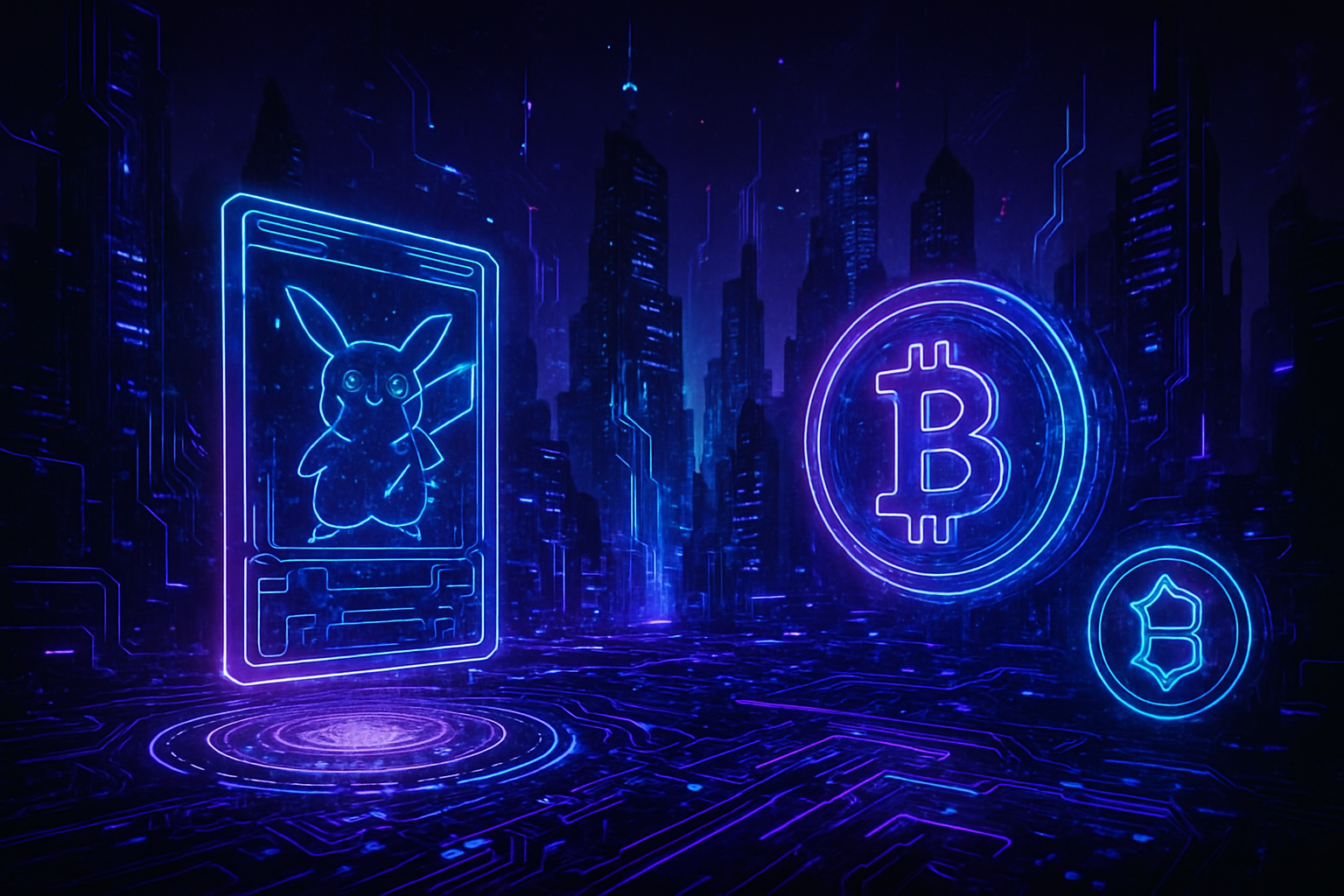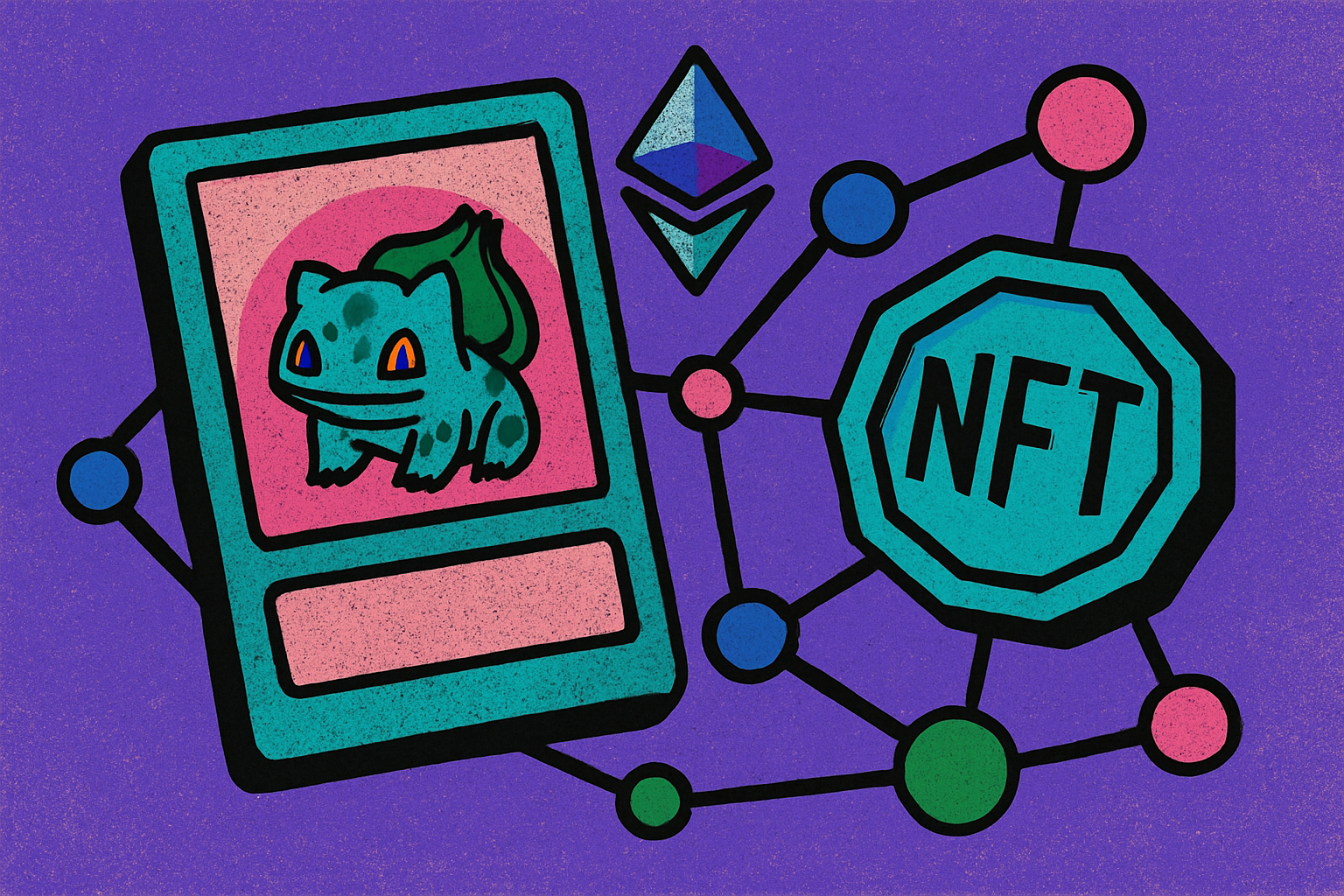
The world of Pokémon card investing has always been defined by scarcity, nostalgia, and the thrill of the hunt. But in 2025, a fundamental shift is underway: RWA collectibles are integrating with blockchain technology to create an entirely new asset class. By tokenizing physical Pokémon cards as NFTs, platforms like Collector Crypt and Courtyard are making it possible to trade these once-illiquid treasures globally, 24/7, with unprecedented liquidity and transparency. This isn’t just a technical upgrade; it’s a revolution that is transforming how collectors and investors interact with their favorite cards.

Pokémon Cards Go On-Chain: From Illiquid Collectibles to Dynamic Crypto Assets
Traditionally, high-value Pokémon cards have been difficult to buy or sell quickly. Transactions required trust between buyers and sellers, physical shipping, insurance, and often hefty fees. Tokenization solves these challenges by converting each graded card into a trading card NFT, securely stored in professional vaults and tradable on platforms powered by the Polygon blockchain.
This process has unlocked remarkable value: between August and September 2025 alone, monthly trading volume for tokenized Pokémon cards soared to $124.5 million, a 5.5-fold increase from earlier in the year. Key catalysts included the launch of Collector Crypt’s native CARDS token (peaking at $0.23 with $7.4 million in liquidity locked) and Courtyard’s innovative approach to redeemable trading card NFTs. These platforms address core collector concerns by ensuring authenticity through PSA/CGC grading and providing transparent proof-of-custody for each asset.
On-Chain Yield: Gacha Systems and Buyback Guarantees Change the Game
The integration of on-chain yield mechanisms has further energized this market. Collector Crypt’s gacha system lets users purchase digital packs containing randomized NFT cards, recreating the excitement of opening booster packs but with instant blockchain settlement and global reach. In just one week, this feature generated $16.6 million in sales, driving monthly trading volume up 124% to $44 million.
Platforms have also introduced buyback guarantees that allow users to sell their NFT cards back at 85, 90% of current market value, providing a liquidity safety net rarely seen in traditional collectibles markets. This innovation not only increases confidence among investors but also helps stabilize prices during periods of volatility.
The Investor Perspective: Real-World Value Meets Crypto Innovation
The rise of collectible RWAs like tokenized Pokémon cards marks a profound evolution in both crypto and collectibles investing. Investors can now access assets that combine the emotional resonance of physical collecting with financial incentives such as staking rewards or yield from platform activity (explore more here). The ability to earn on-chain yield while holding exposure to rare cards is drawing new participants, from crypto natives seeking diversification to longtime collectors exploring digital-first strategies.
This trend is part of a broader movement toward tokenizing real-world assets, from luxury watches to fine art, but Pokémon cards are leading the charge thanks to their global brand recognition and deep collector base (read about broader RWA trends here). As this ecosystem matures, expect even more creative mechanisms for yield generation, fractional ownership, and community engagement around these beloved assets.
Yet, not every traditionalist is convinced. Some argue that “sentiment” – the tactile joy of holding a card, the thrill of in-person trading, remains irreplaceable, and that tokenization cannot fully capture the culture and nostalgia that define Pokémon collecting. Still, the surge in on-chain trading card NFTs suggests a growing appetite for digital-first ownership models, especially among younger collectors and global investors who value liquidity and transparency over physical possession.
For those willing to embrace this new paradigm, platforms are offering features beyond simple trading. NFT staking programs now let users lock up their tokenized Pokémon cards to earn additional rewards or yield, echoing DeFi strategies but grounded in the value of real-world collectibles. This convergence of physical scarcity and digital yield is creating novel investment opportunities: portfolios can be constructed from rare cards, traded frictionlessly, staked for passive returns, or even fractionalized to allow shared ownership among multiple backers.
Risks and Realities: Liquidity, Security, and Future Adoption
Despite these advances, challenges remain. The promise of instant liquidity is real, monthly on-chain volumes reaching $124.5 million reflect robust demand, but market depth for specific rare cards can still be thin compared to blue-chip cryptocurrencies. Security is paramount: any breach at a vault custodian or platform could undermine trust in the entire ecosystem. Regulatory clarity is also evolving; as authorities weigh in on how tokenized RWAs should be treated, compliance burdens may rise.
Perhaps most crucially, user experience will determine long-term adoption. Platforms must continue to bridge the gap between old-school collectors and crypto-savvy traders by making onboarding seamless and emphasizing transparency around custody and redemption processes. As more IP owners experiment with RWA collectibles, from Magic: The Gathering to sports memorabilia, competition will drive innovation but also raise expectations for security and utility.
What’s Next? Pokémon Cards as a Blueprint for On-Chain Collectibles
The rapid ascent of tokenized Pokémon cards offers a preview of what’s possible as more real-world assets migrate on-chain. By blending provable scarcity with programmable utility (yield mechanisms, gacha packs, buyback guarantees), these platforms are setting new standards for both transparency and engagement in alternative asset investing.
If current trends hold, with $124.5 million monthly volumes and innovative yield products gaining traction, we’re likely witnessing just the first wave of crypto-native collectibles markets built atop trusted brands. For investors seeking diversification beyond traditional equities or bonds, trading card NFTs represent an intriguing mix of nostalgia-fueled demand and cutting-edge financial engineering.
The question isn’t whether RWA collectibles like Pokémon cards will reshape investing; it’s how quickly mainstream adoption will follow as technology continues to lower barriers between physical passions and digital opportunity.



